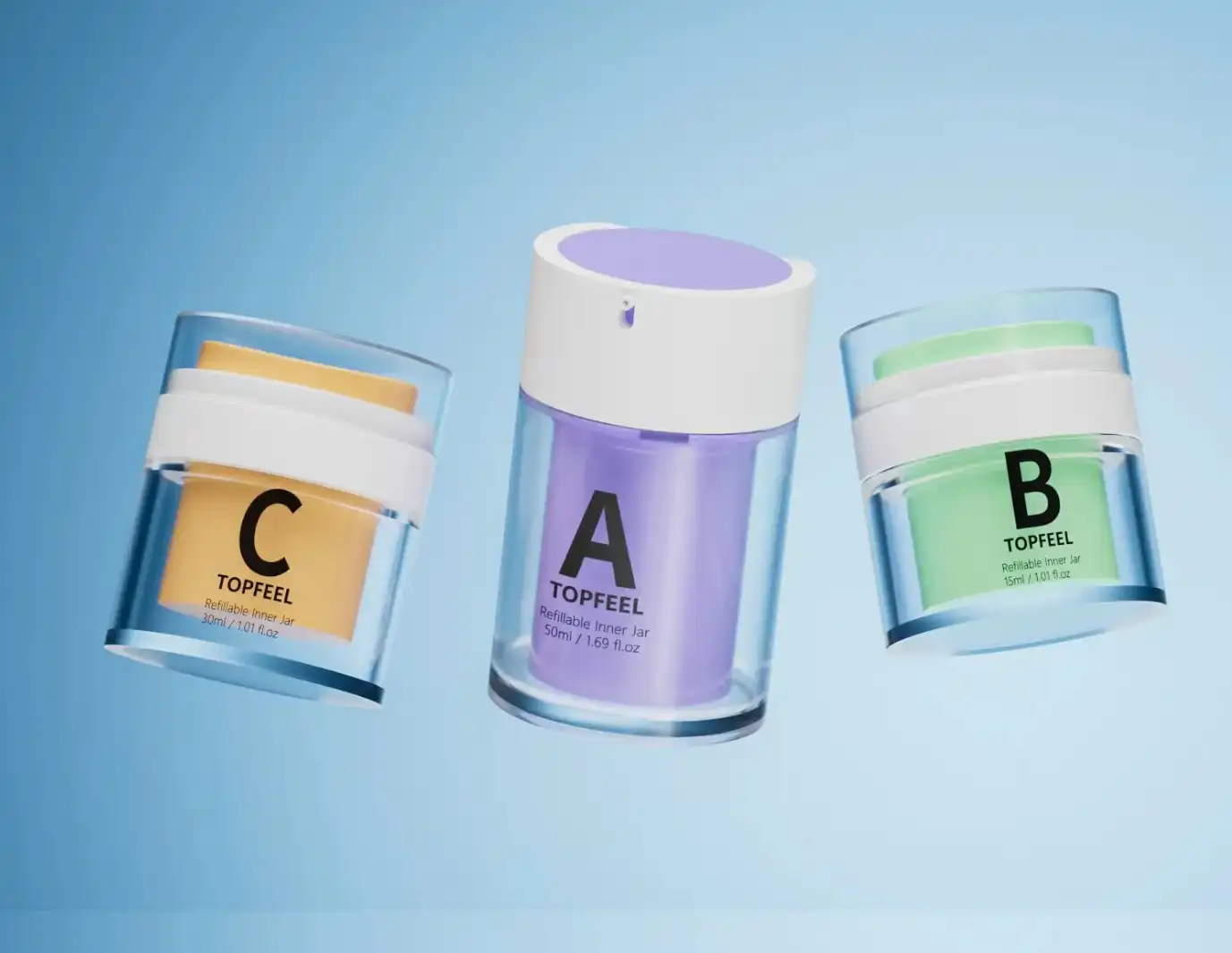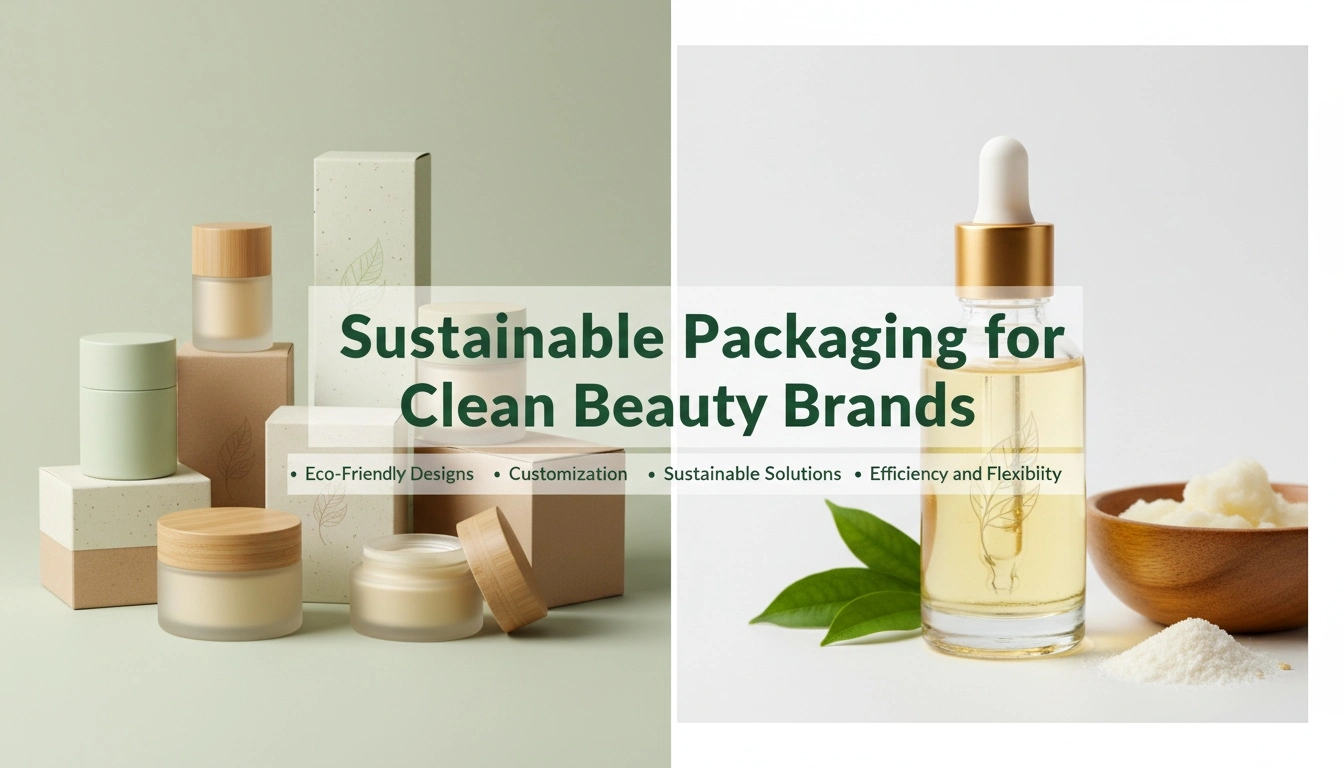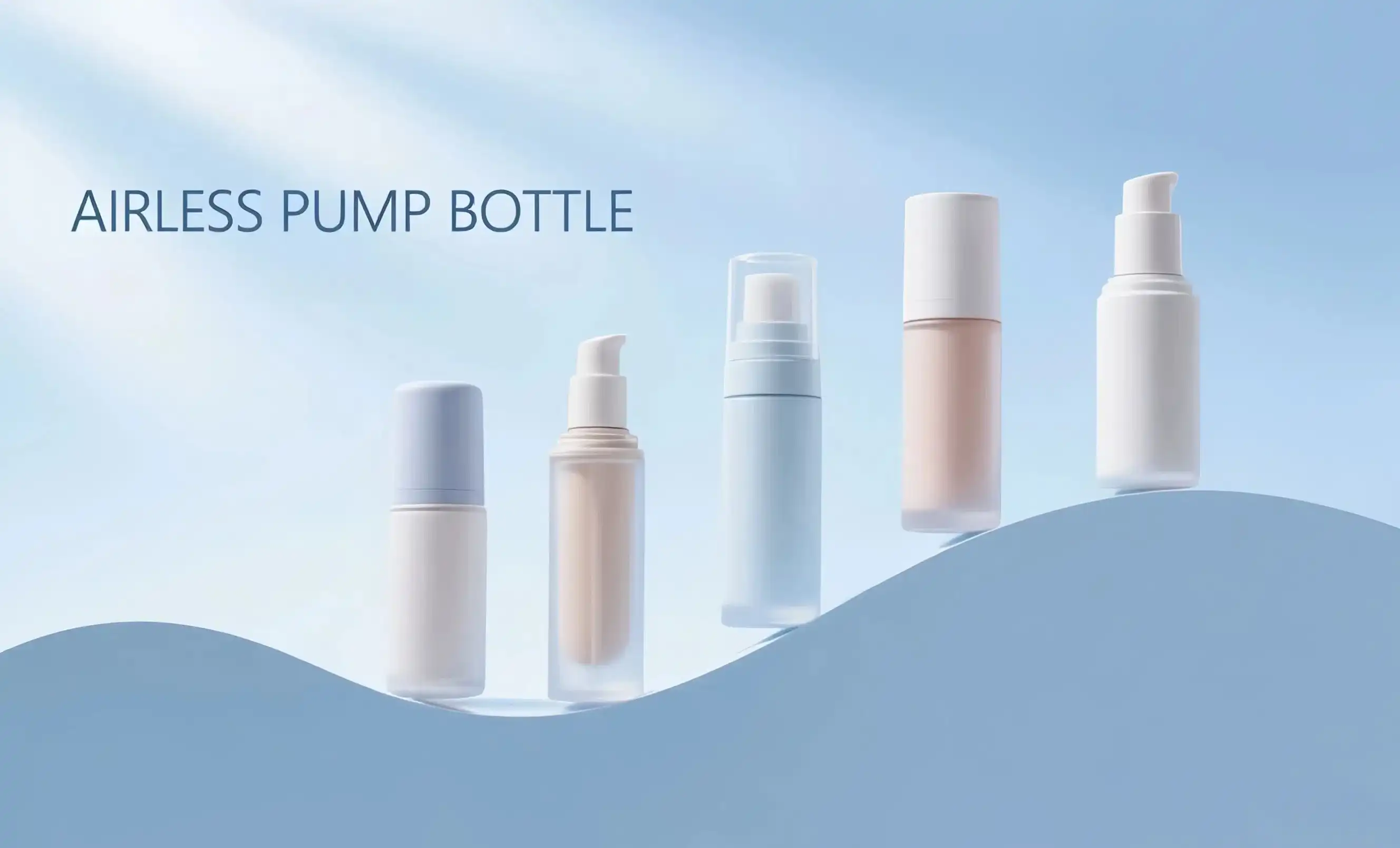The Eco-Friendly Shift in Beauty Packaging
The beauty industry is undergoing a significant transformation as it embraces more sustainable packaging solutions. This shift is driven by increasing environmental awareness and consumer demand for eco-friendly products. Glass airless jars are at the forefront of this movement, offering a perfect blend of functionality and sustainability.
Topfeelpack's Commitment to Sustainable Packaging
Leading companies like Topfeelpack are pioneering the use of sustainable materials in beauty packaging. Their glass airless jars are designed with both environmental impact and product preservation in mind. By using recyclable glass and minimizing plastic components, these jars significantly reduce the carbon footprint associated with traditional packaging.
The airless technology in these jars also contributes to sustainability by extending product shelf life and reducing waste. This innovative design ensures that every last drop of the product can be used, minimizing the amount of unused product that often ends up in landfills.
Reducing Plastic Waste in the Beauty Industry
The beauty industry has long been criticized for its reliance on plastic packaging, which contributes significantly to global plastic pollution. Glass airless jars offer a viable alternative that addresses this issue head-on. Unlike plastic, glass is infinitely recyclable without loss of quality, making it a more sustainable choice for long-term environmental protection.
Moreover, the durability of glass means these jars can often be reused or repurposed, further reducing waste. This aligns with the growing consumer trend towards a zero-waste lifestyle, where every aspect of consumption is scrutinized for its environmental impact.
Glass vs. Plastic: A Sustainability Showdown
When it comes to packaging materials, the debate between glass and plastic has been ongoing. However, in the context of skincare packaging, glass is increasingly being recognized as the superior choice, especially when combined with airless technology.
The Environmental Benefits of Glass Packaging
Glass offers several environmental advantages over plastic:
- Recyclability: Glass can be recycled indefinitely without losing quality or purity.
- Non-toxic: Glass doesn't leach chemicals into products, ensuring purity and safety.
- Durability: Glass containers last longer and can be reused multiple times.
- Lower carbon footprint: When recycled, glass production requires less energy compared to creating new plastic.
These benefits make glass airless jars an attractive option for brands looking to reduce their environmental impact while maintaining product quality.
Addressing the Challenges of Plastic Packaging
Plastic packaging, while convenient, poses significant environmental challenges:
- Limited recyclability: Many types of plastic used in beauty packaging are not easily recyclable.
- Microplastic pollution: Plastic breaks down into microplastics, contaminating ecosystems.
- Chemical leaching: Some plastics can leach harmful chemicals into products over time.
- Fossil fuel dependency: Plastic production relies heavily on non-renewable fossil fuels.
By switching to glass airless jars, brands can address these issues while also appealing to environmentally conscious consumers.
Consumer Demand Driving Packaging Innovation
The rise of glass airless jars in skincare packaging is not just a result of environmental concerns; it's also driven by changing consumer preferences and demands for higher quality products.
The Appeal of Premium Packaging
Consumers are increasingly drawn to products that offer a premium experience, and packaging plays a crucial role in this perception. Glass airless jars exude luxury and quality, enhancing the perceived value of the product inside. The weight, texture, and visual appeal of glass contribute to a more satisfying user experience, which can justify higher price points for premium skincare products.
Furthermore, the transparency of glass allows consumers to see the product, building trust and allowing them to monitor usage. This visibility is particularly valuable for high-end skincare products where consumers want to ensure they're getting value for their investment.
Topfeelpack's Innovation in Airless Pump Jar Glass Technology
Topfeelpack has been at the forefront of innovation in airless packaging technology. Their airless pump jar glass designs combine the benefits of glass with advanced airless dispensing systems. This technology ensures that products are protected from air and contaminants, maintaining their efficacy throughout use.
The airless pump mechanism also allows for precise dosing, reducing product waste and providing a more hygienic application process. This is particularly important for sensitive skincare formulations that can degrade when exposed to air or bacteria from repeated contact.
Meeting the Needs of Diverse Skincare Brands
The versatility of glass airless jars makes them suitable for a wide range of skincare products, from lightweight serums to rich creams. This adaptability is crucial for brands that offer diverse product lines and want to maintain consistency in their packaging aesthetic.
For niche and indie brands, the ability to customize glass airless jars with unique designs and finishes offers an opportunity to stand out in a crowded market. The premium look of glass packaging can help these brands compete with established luxury skincare lines, even with smaller marketing budgets.
The Role of Regulations in Driving Change
Regulatory pressures are also playing a role in the shift towards more sustainable packaging options. As governments worldwide implement stricter environmental regulations, brands are proactively seeking packaging solutions that comply with current and future standards. Glass airless jars, with their recyclability and non-toxic nature, are well-positioned to meet these evolving regulatory requirements.
In addition, certifications for sustainable and eco-friendly packaging are becoming increasingly important for consumers. Brands that adopt glass airless jars can more easily obtain these certifications, enhancing their credibility and appeal to environmentally conscious shoppers.
The Future of Skincare Packaging
As the beauty industry continues to evolve, the adoption of glass airless jars is likely to accelerate. This trend reflects a broader movement towards sustainability, premium experiences, and product efficacy in the skincare market. Brands that embrace these innovative packaging solutions are not only addressing current consumer demands but are also future-proofing their products against changing market dynamics and regulatory landscapes.
The revolution in skincare packaging led by glass airless jars is more than just a passing trend. It represents a fundamental shift in how we approach product design, sustainability, and consumer experience in the beauty industry. As technology continues to advance, we can expect to see even more innovations in this space, further enhancing the benefits of glass airless packaging for both brands and consumers.
Conclusion
The revolution in skincare packaging brought about by glass airless jars is reshaping the beauty industry. These innovative containers offer a perfect blend of sustainability, functionality, and aesthetic appeal, addressing the needs of both environmentally conscious consumers and brands seeking to elevate their product offerings. As we move towards a more sustainable future, glass airless jars stand out as a symbol of progress in the beauty packaging sector.
For skincare brands, beauty stores, and cosmetics manufacturers looking to stay ahead of the curve, embracing glass airless packaging is not just an option – it's becoming a necessity. Topfeelpack is at the forefront of this packaging revolution, offering advanced airless bottles designed to prevent air exposure, maintain product effectiveness, and ensure longer shelf life. Our commitment to sustainability, fast customization, competitive pricing, and quick delivery makes us an ideal partner for brands seeking to upgrade their packaging solutions.
Whether you're a high-end skincare brand, a trendy makeup line, or a DTC beauty retailer, Topfeelpack has the expertise and technology to meet your specific packaging needs. Our glass airless jars comply with stringent environmental regulations and offer the flexibility and customization options that modern beauty brands demand.
Ready to revolutionize your skincare packaging? Contact Topfeelpack today at pack@topfeelgroup.com to learn more about our glass airless jar solutions and how we can help elevate your brand's packaging to new heights of sustainability and sophistication.
References
- Johnson, A. (2023). "The Rise of Sustainable Packaging in the Beauty Industry." Journal of Cosmetic Science, 74(2), 145-160.
- Smith, B. et al. (2022). "Consumer Perceptions of Eco-Friendly Packaging in Skincare Products." International Journal of Consumer Studies, 46(3), 512-528.
- Green Packaging Institute. (2023). "Annual Report on Sustainable Packaging Trends in Cosmetics."
- Zhang, L. and Wang, Y. (2023). "Comparative Life Cycle Assessment of Glass and Plastic Packaging in the Beauty Industry." Environmental Science & Technology, 57(8), 4321-4335.
- Brown, C. (2022). "The Impact of Airless Technology on Product Shelf Life and Efficacy." Cosmetics & Toiletries Magazine, 137(5), 22-28.
- European Commission. (2023). "Circular Economy Action Plan: Implementation in the Cosmetics Sector."


 - 副本_1745399213966.webp)

_1747827716538.webp)

